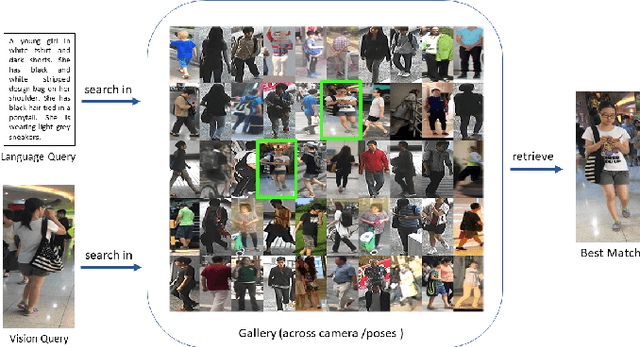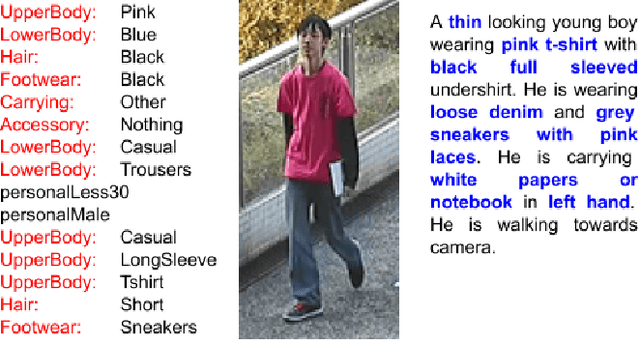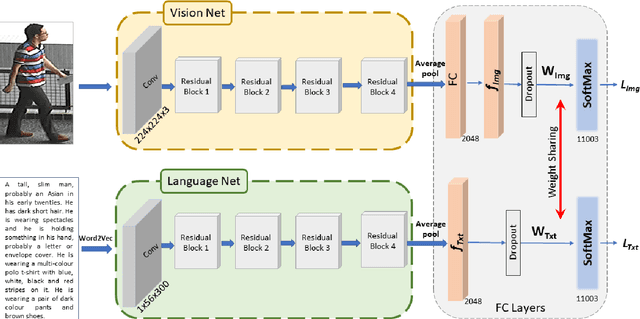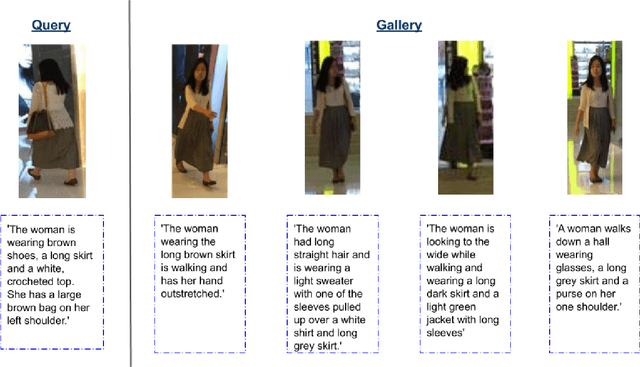A Convolutional Baseline for Person Re-Identification Using Vision and Language Descriptions
Paper and Code
Feb 20, 2020



Classical person re-identification approaches assume that a person of interest has appeared across different cameras and can be queried by one of the existing images. However, in real-world surveillance scenarios, frequently no visual information will be available about the queried person. In such scenarios, a natural language description of the person by a witness will provide the only source of information for retrieval. In this work, person re-identification using both vision and language information is addressed under all possible gallery and query scenarios. A two stream deep convolutional neural network framework supervised by cross entropy loss is presented. The weights connecting the second last layer to the last layer with class probabilities, i.e., logits of softmax layer are shared in both networks. Canonical Correlation Analysis is performed to enhance the correlation between the two modalities in a joint latent embedding space. To investigate the benefits of the proposed approach, a new testing protocol under a multi modal ReID setting is proposed for the test split of the CUHK-PEDES and CUHK-SYSU benchmarks. The experimental results verify the merits of the proposed system. The learnt visual representations are more robust and perform 22\% better during retrieval as compared to a single modality system. The retrieval with a multi modal query greatly enhances the re-identification capability of the system quantitatively as well as qualitatively.
 Add to Chrome
Add to Chrome Add to Firefox
Add to Firefox Add to Edge
Add to Edge